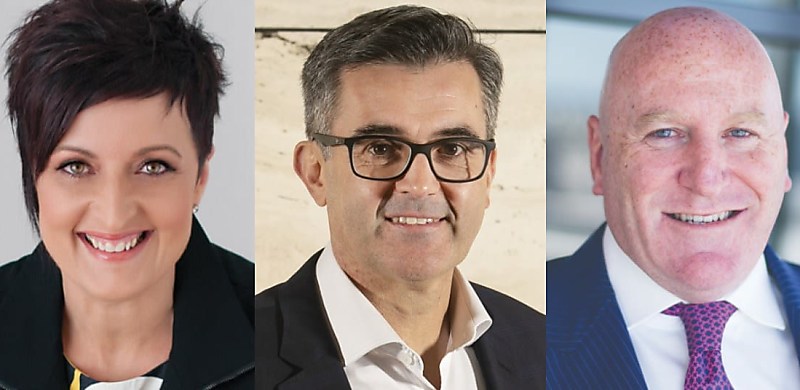
A broker has said the RBA's November rate hike "did not make sense", as other broking industry representatives foresee more pain for borrowers.
The Reserve Bank of Australia (RBA) has decided to increase the official cash rate by 0.25 per cent from 4.1 per cent to 4.35 per cent, marking the 13th cash rate hike since the tightening cycle began in May 2022 and ending the RBA’s streak of four consecutive cash rate holds.
Today’s (7 November) cash rate decision has marked the second monetary policy meeting for RBA governor Michele Bullock, who took on the role in September after the departure of her predecessor Philip Lowe.
Ms Bullock stated: “Whether further tightening of monetary policy is required to ensure that inflation returns to target in a reasonable time frame will depend upon the data and the evolving assessment of risks.
“In making its decisions, the board will continue to pay close attention to developments in the global economy, trends in domestic demand, and the outlook for inflation and the labour market.”
Ms Bullock noted there are still “significant uncertainties” around economic outlook, particularly regarding persistent overseas services price inflation, the lags of the effect of monetary policy and the outlook for household consumption.
She said many households are “experiencing a painful squeeze” on finances “while some are benefiting from rising housing prices, substantial savings buffers and higher interest income”.
Reacting to the decision, the director and principal broker at Zippy Financial, Lousia Sanghera said the RBA's decision to hike "did not make sense" due to inflation showing signs of moderation over the last nine months along with a fall in investor and homebuyer activity during this period.
“Many of the new or existing borrowers we speak with have absolutely no chance of refinancing, with a lot of them technically not servicing their current debt levels,” she said.
“Over the past two months in particular, borrowers are becoming more desperate with many homeowners turning to interest-only repayments as the only way they can continue to hold on to their homes.
“Unfortunately, their current lenders don’t necessarily offer interest only to owner occupiers – and they can’t refinance – so they may need to sell or opt for a repayment pause to keep the roof over their heads.”
Mortgage Choice chief executive Anthony Waldron commented: “Australians will no doubt be disappointed with the Reserve Bank’s call, but Governor Bullock had made it clear over the last month that another cash rate rise was not off the cards.
“The latest economic data, which shows an increase in inflation over the September quarter and a fall in the unemployment rate, no doubt contributed to the RBA Board’s decision.”
The executive director of aggregator Connective, Mark Haron, stated that the “RBA’s recent cash rate hike was anticipated”, as the September quarter Consumer Price Index (CPI) returned a higher-than-expected result.
“As the financial landscape changes and the lending environment becomes increasingly complex, it is placing increased pressure on borrowers, signalling that the trust between brokers and borrowers is even more important,” Mr Haron said.
Quarterly inflation results fulfil rate expectations
The latest CPI data released by the Australian Bureau of Statistics (ABS) spurred a shift in monetary policy expectations among economists and commentators.
The September quarter CPI rose 1.2 per cent and 5.4 per cent annually, as annual inflation continued to drop from the 7.8 per cent peak in the December 2022 quarter.
Prior to the meeting, Finsure Group CEO Simon Bednar said he believed that another rate increase by the RBA was “inevitable” due to persistent inflation and “continued pressure on rents, fuel prices and electricity”.
“I don’t think the RBA have any choice but to go [up] 25 basis points now and see if there is any impact before Christmas,” Mr Bednar said.
“A big question is not just whether they decide to lift rates on Melbourne Cup Day, but if they go again in December or wait until February to give families a break over the summer holidays.”
Australia’s major banks had also adjusted their rate forecasts following the release of the September quarter CPI data, along with the RBA’s hawkish attitude towards returning inflation to the target range of 2–3 per cent.
The minutes of the RBA’s October monetary policy meeting revealed that the RBA has “a low tolerance for a slower return of inflation to target than currently expected” and that future interest rate increases would depend on incoming data, particularly the third quarter CPI and how this data would “alter the economic outlook and the evolving assessment of risks”.
RBA members also acknowledged the “significant concern” of upside risks based on how long inflation is likely to remain above its target range.
However, some were unconvinced that the RBA would lift interest rates, as Home Loan Experts CEO Alan Hemmings said earlier this week that there was still a chance for another hold.
“I think the RBA has got an opportunity to leave [rates on hold] for another month and just see what is actually happening with inflation because the big driver of inflation at the moment is fuel costs,” Mr Hemmings stated.
[RELATED: Broking industry braces for rate hike]
 Login
Login











JOIN THE DISCUSSION